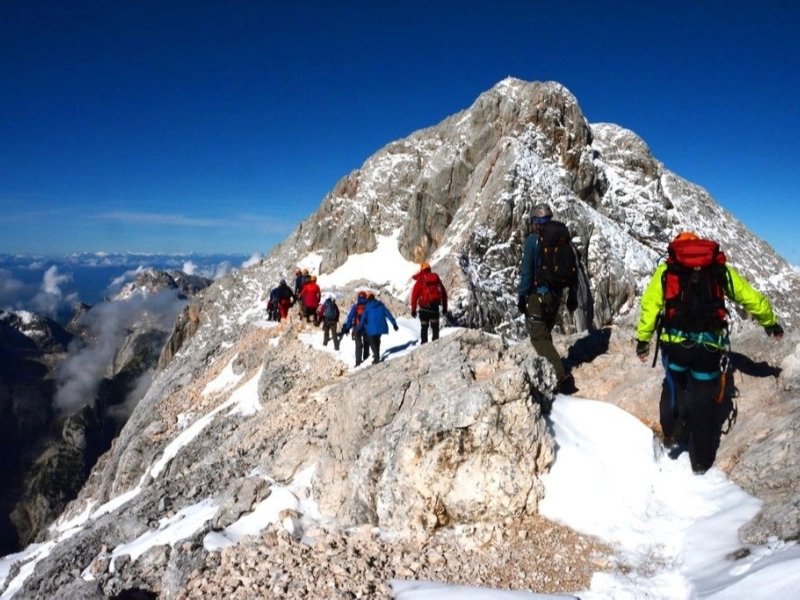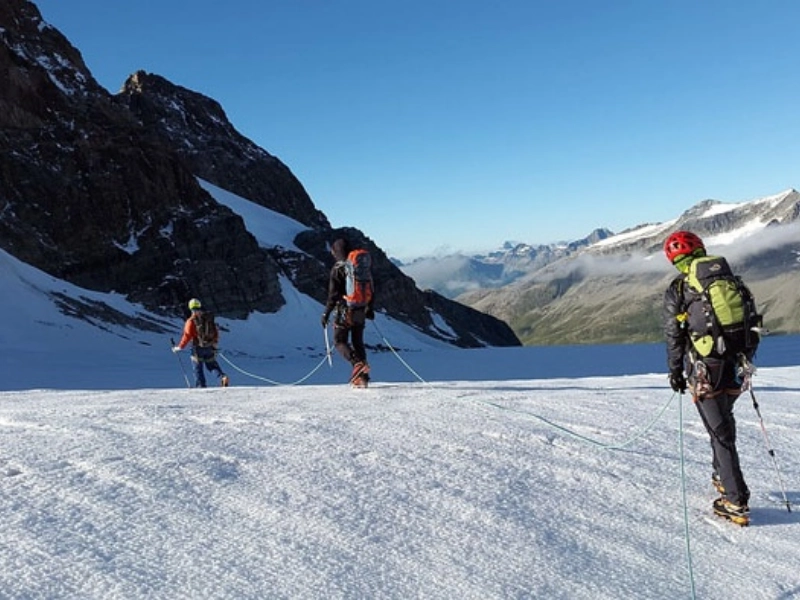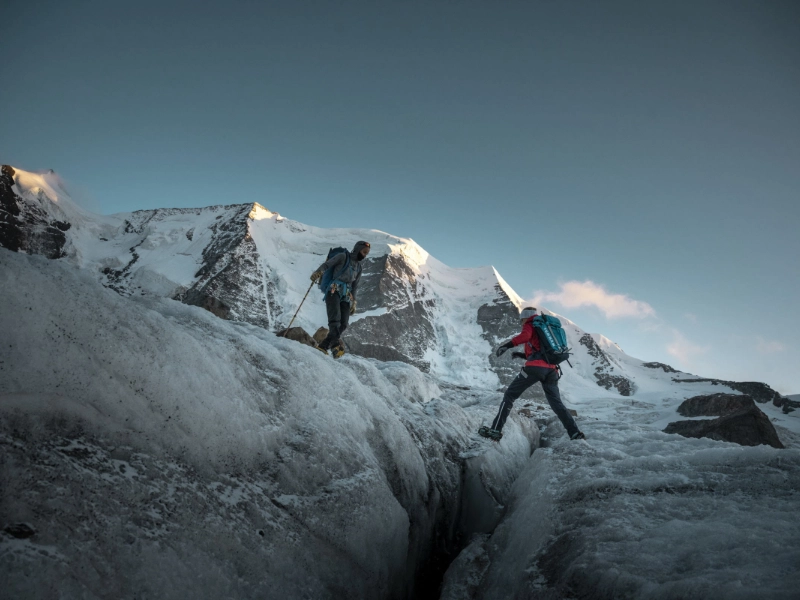Bouldering places a tremendous amount of stress on the tendons that run inside and down the sides of your fingers. These tendons can be very painful to damage, which might restrict your climbing and result in injury. It's critical to acquire the correct technique and create muscle memory for it. Climbers frequently place an extreme emphasis on strength development at the expense of technique.
 Your forearm muscles are under a lot of stress while you're holding onto anything and keeping your position of power for extended periods of time. This may be particularly true for novices whose grip strength is still developing.
Additionally, climbing heavily strains the tendons in your elbow joints. If the load is too great or the muscles and tendons are not getting enough rest, this may result in inflammation and pain.
It is possible to lessen this strain and facilitate redpoint by using other muscle groups to balance the force applied to the elbow joints. For example, by strengthening the muscles that stabilize the shoulder joint, performing certain scapular (shoulder blade) stability exercises might help prevent a lot of elbow pain from increasing.
Your forearm muscles are under a lot of stress while you're holding onto anything and keeping your position of power for extended periods of time. This may be particularly true for novices whose grip strength is still developing.
Additionally, climbing heavily strains the tendons in your elbow joints. If the load is too great or the muscles and tendons are not getting enough rest, this may result in inflammation and pain.
It is possible to lessen this strain and facilitate redpoint by using other muscle groups to balance the force applied to the elbow joints. For example, by strengthening the muscles that stabilize the shoulder joint, performing certain scapular (shoulder blade) stability exercises might help prevent a lot of elbow pain from increasing.
 Particularly when engaging in dynamic movements or depending on arm force over the head, climbing can put a great deal of strain on the shoulder muscles (over the head). A partial dislocation (SLAP) of the joint may result from this increased strain on the rotator cuff muscles.
The condition known as tennis elbow, or lateral epicondylitis, which is defined as irritation, inflammation, and ripping of the tendons that attach to the bony bulge on the outside of the elbow, can also be made worse by frequent climbing. Extra strain is placed on these tendons since they are needed to flex your fingers and wrist into the climbing position.
Preventing injuries primarily requires strengthening these muscles. Dynamic stretching before climbing will increase shoulder musculoskeletal mobility and help you get ready for the rigors of the ascent. After climbing, it's crucial to do static stretches to alleviate any stiffness in the muscles and joints.
Particularly when engaging in dynamic movements or depending on arm force over the head, climbing can put a great deal of strain on the shoulder muscles (over the head). A partial dislocation (SLAP) of the joint may result from this increased strain on the rotator cuff muscles.
The condition known as tennis elbow, or lateral epicondylitis, which is defined as irritation, inflammation, and ripping of the tendons that attach to the bony bulge on the outside of the elbow, can also be made worse by frequent climbing. Extra strain is placed on these tendons since they are needed to flex your fingers and wrist into the climbing position.
Preventing injuries primarily requires strengthening these muscles. Dynamic stretching before climbing will increase shoulder musculoskeletal mobility and help you get ready for the rigors of the ascent. After climbing, it's crucial to do static stretches to alleviate any stiffness in the muscles and joints.
 Although climbing works the entire body, it works the core and upper body the hardest. Your back muscles (latissimus dorsi and rhomboids) will grow as a result of the pulling motions performed during climbing, which will also strengthen your chest's push muscles (pectoral muscles). Building a strong, healthy core is a significant benefit of climbing.
Climbing requires strong hips and proper footwork. Traction is the ability to 'glue' your feet to the wall, which improves stability on tight and challenging footholds. To achieve this, practice and learn the optimal resting positions for climbing.
A torn tendon in the hand or shoulder is the most common injury sustained during climbing. These wounds may require months of recuperation and perhaps surgery. Overuse and repetitive overhead or rotational motions made during climbing are the usual causes of these injuries. For this reason, it's critical to properly stretch both before and after climbing. It's also crucial to refrain from strenuous climbing until the tendons heal.
Although climbing works the entire body, it works the core and upper body the hardest. Your back muscles (latissimus dorsi and rhomboids) will grow as a result of the pulling motions performed during climbing, which will also strengthen your chest's push muscles (pectoral muscles). Building a strong, healthy core is a significant benefit of climbing.
Climbing requires strong hips and proper footwork. Traction is the ability to 'glue' your feet to the wall, which improves stability on tight and challenging footholds. To achieve this, practice and learn the optimal resting positions for climbing.
A torn tendon in the hand or shoulder is the most common injury sustained during climbing. These wounds may require months of recuperation and perhaps surgery. Overuse and repetitive overhead or rotational motions made during climbing are the usual causes of these injuries. For this reason, it's critical to properly stretch both before and after climbing. It's also crucial to refrain from strenuous climbing until the tendons heal.
 Climbing is an excellent technique to work out your entire body. It exercises every major muscle and tendon in the shoulders, core, arms, and legs. In addition, climbing is a fantastic social exercise, with many climbers training alongside friends and partners. Building trust and motivation is facilitated by teamwork in achieving an objective.
Long-term belaying strains the neck and can cause a condition known as climber's hunch, which is a group of impairments that cause pain during climbing. The deformities include kyphosis, or rigid thoracic spine, forward head posture, rounded shoulders, and a hinge point in the neck joints.
Your spine's facet joints get irritated as a result of these alterations, and they notify the brain of pain. Your neck's surrounding muscles become irritated as a result, making you feel stiff and sensitive. Try carrying two tennis balls in a sock to the crag and placing them at the base of your skull to aid with this soreness. Using these balls, gently massage the area, focusing especially on the tense muscles at the back of your neck.
Climbing is an excellent technique to work out your entire body. It exercises every major muscle and tendon in the shoulders, core, arms, and legs. In addition, climbing is a fantastic social exercise, with many climbers training alongside friends and partners. Building trust and motivation is facilitated by teamwork in achieving an objective.
Long-term belaying strains the neck and can cause a condition known as climber's hunch, which is a group of impairments that cause pain during climbing. The deformities include kyphosis, or rigid thoracic spine, forward head posture, rounded shoulders, and a hinge point in the neck joints.
Your spine's facet joints get irritated as a result of these alterations, and they notify the brain of pain. Your neck's surrounding muscles become irritated as a result, making you feel stiff and sensitive. Try carrying two tennis balls in a sock to the crag and placing them at the base of your skull to aid with this soreness. Using these balls, gently massage the area, focusing especially on the tense muscles at the back of your neck.